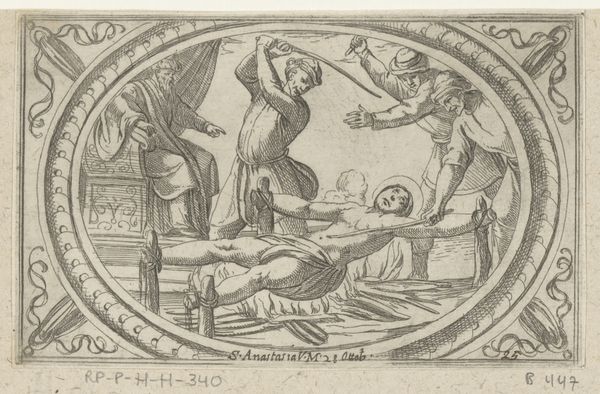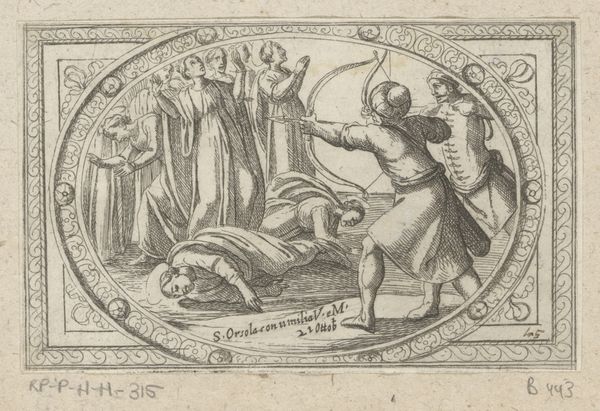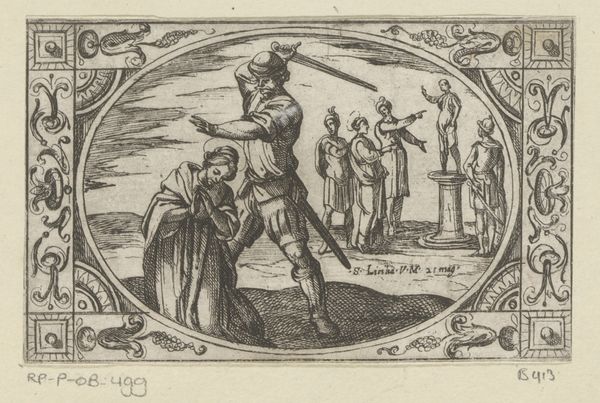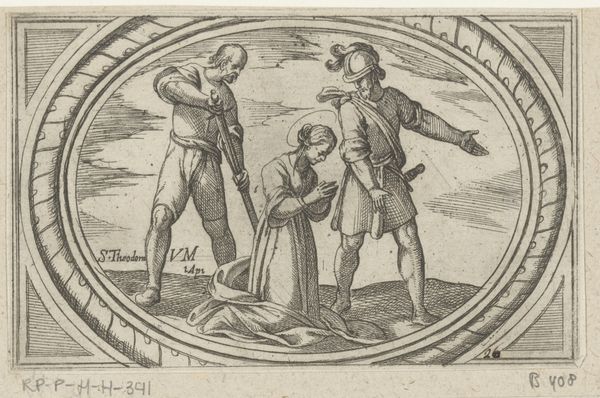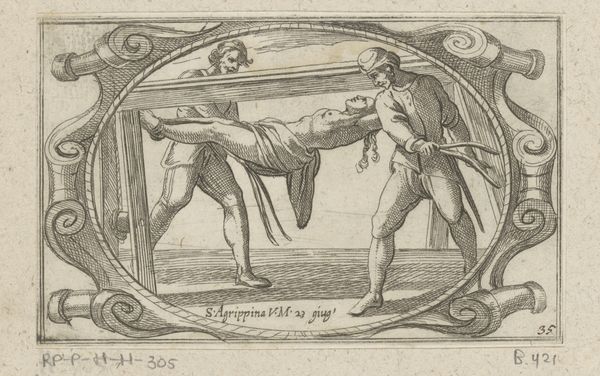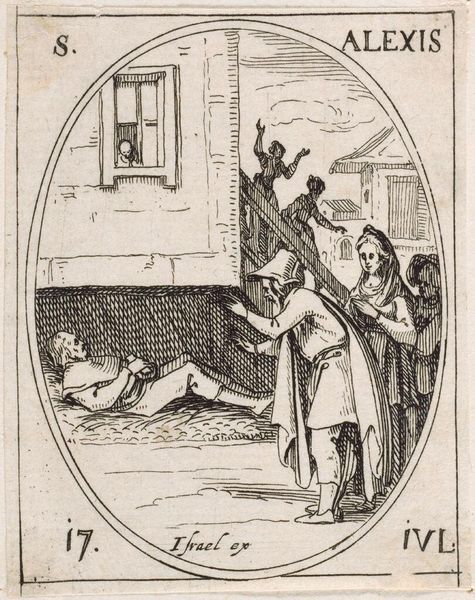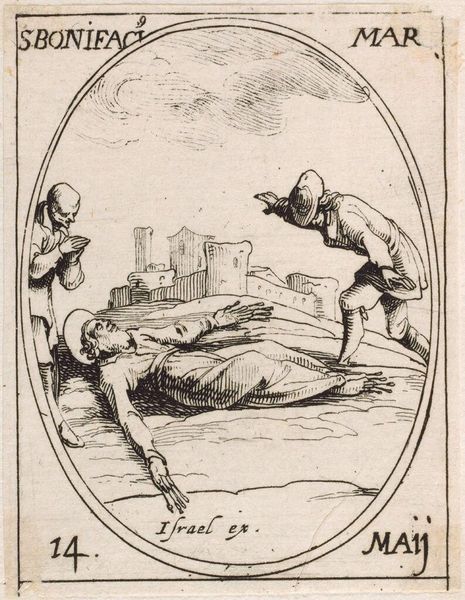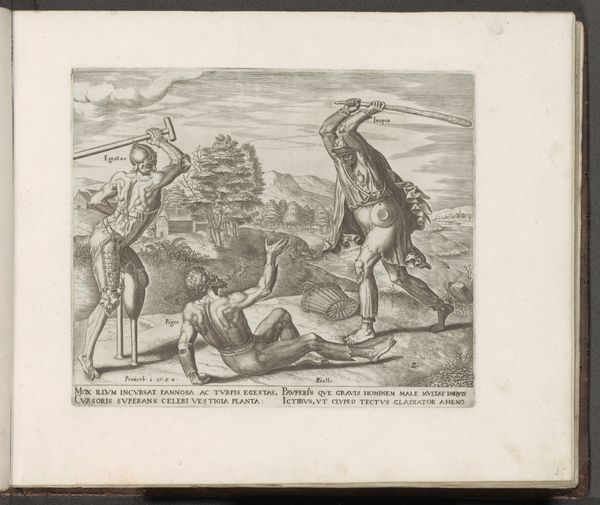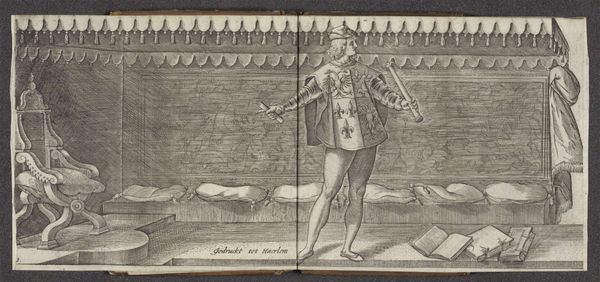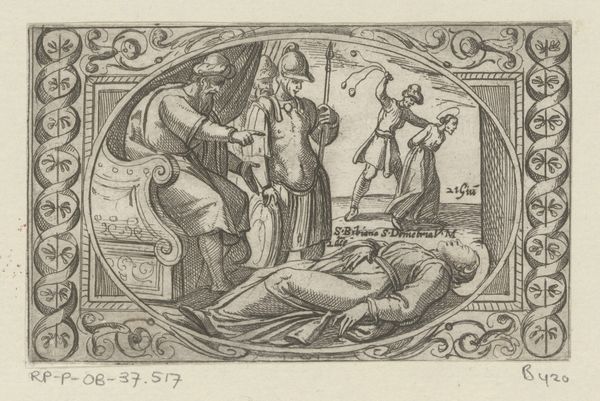
print, intaglio, engraving
#
narrative-art
#
baroque
# print
#
intaglio
#
old engraving style
#
figuration
#
history-painting
#
engraving
Dimensions: height 73 mm, width 114 mm
Copyright: Rijks Museum: Open Domain
Editor: This is "H. Lucia," an intaglio print by Antonio Tempesta, dating somewhere between 1565 and 1630. It’s a stark image. The violence is…unmistakable. What strikes you most when you look at this work? Curator: What’s immediately apparent to me is how the print, as a medium, allows this image to circulate widely. Consider the socio-political function of depicting Saint Lucia's martyrdom. During the Counter-Reformation, the Catholic Church actively promoted images of saints, including gruesome scenes like this one, to inspire faith and reaffirm Catholic doctrine against Protestant challenges. Does that change how you perceive it? Editor: Yes, knowing the historical context definitely adds another layer. It feels almost propagandistic, showcasing the brutality inflicted on those who remained loyal to the Church. The detail seems almost celebratory. Curator: Exactly! It is both a depiction of violence and a celebration of unwavering faith. Note how the clear lines and organized composition – typical of Baroque sensibilities – also contribute to the narrative clarity and forceful message. Think about how prints like this influenced the visual culture of the time. Where else might similar imagery have appeared? Editor: I guess similar imagery may have been in illuminated manuscripts, and later, even popular books, to spread moral lessons. So it served a public role, to both edify and intimidate. Curator: Precisely. The image serves as a public testament and tool. Understanding these aspects really highlights the complex relationship between art, religion, and power during the Baroque period, don’t you think? Editor: It definitely does. Seeing how it was designed to function within a specific cultural and religious climate gives it a whole new dimension. I didn't appreciate how prints like this acted as agents of power. Thank you!
Comments
No comments
Be the first to comment and join the conversation on the ultimate creative platform.
